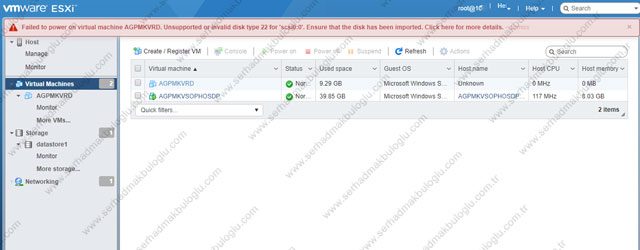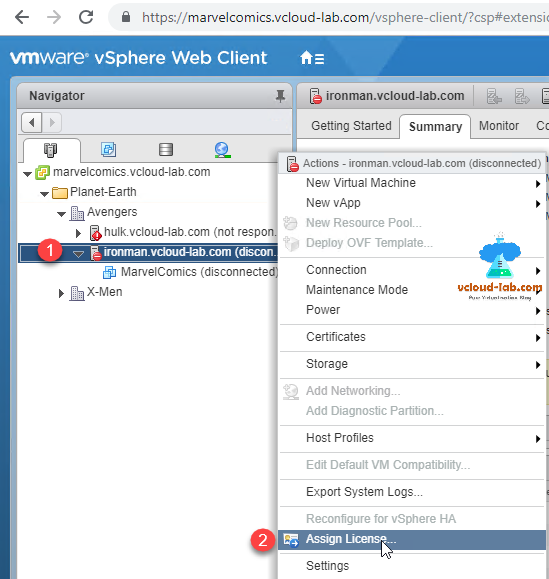
- #FAILED TO EXPORT OVF VMWARE WEBCLIENT MAC OS#
- #FAILED TO EXPORT OVF VMWARE WEBCLIENT UPGRADE#
- #FAILED TO EXPORT OVF VMWARE WEBCLIENT ISO#
Today at a client, we had an issue with a published application that had Google Chrome in it. After the installation i used Chrome to login to the vSphere Web Client and on the login screen i downloaded the Client Integration Plug-In, and installed it.

The Ubuntu works as it's not a graphical console. When I checked that version value, Chrome wanted to give me an update.

Solution VMware Client Integration Plug-In not Working in Chrome? By GrumpyTechie on J How bad! To recap, when connected to the vSphere Web Console you’re unable to type some special characters, including: – (dash) / (slash) The main page of the vSphere Client opens as shown in Figure 2-1. If it does, then skip down to the next tip. properties Cause By default, vCenter does not support non-secure HTTP URL for script plug-in. The plugin is no longer working also using other browsers like Firefox or Internet Explorer. The current log is empty which I think is due to vSphere Web Client not running. 5 release, replaced by web-based clients. I have noticed that with the recent releases of Mozilla Firefox and Google Chrome, the ability to launch VMware Client Integration Plugin was broken again. How does this work under the covers? In order to display the virtual machine console, PowerCLI uses the VMRCbrowser plug-in embedded in a Web page. When attempting to deploy an OVF template in the Chrome Web browser, it will fail because the browser no longer runs the Client Integration Plug-in. A vSphere Web Client plugin might stop working with Chrome version 55 and above Some third-party plugins might stop working with vSphere Web Client 6. Create a copy of the Chrome shortcut on the desktop, and rename it to RH Chrome Local (or something similar).
#FAILED TO EXPORT OVF VMWARE WEBCLIENT MAC OS#
A minimum of Firefox 34 or Chrome 39 are required on Mac OS X. This is a known issue in vSphere Web Client 5. " Before you can actually set Gmail as your default email client, you need to allow Gmail to ask you permission. The thing is that this message saying that Client Integration Plug-in must be installed to enable OVF functionality is pretty showstopper as it prevents you to deploy OVF file via web browser. vSphere Web Client integration plug-in fails. These open web technologies became the default experience for Chrome late last year when sites started needing to ask your permission to run Flash.
#FAILED TO EXPORT OVF VMWARE WEBCLIENT UPGRADE#
If C client was available, we could only upgrade it once on each management workstation and get to our duties, securely. First, open an Incognito window in Chrome (three-dotted menu icon at top right -> New incognito window), then try scrolling to see if the problem persists. Google Chrome 43 onwards, NPAPI is disabled by default. I cant exactly correlate but I think it's specific to the 1. 5, the vSphere Web Client service does not start and the following messages appear in the Virgo Server log: This is a known issue in vSphere Web Client 5.
#FAILED TO EXPORT OVF VMWARE WEBCLIENT ISO#
The problem is that ovftool is trying to find the iso in the datastore apart from the vm i was trying to export, the virtual cd room of siem was set to datastore iso, so in order to fix this I need to change back to the Host device.Īfter i changed from “Datastore ISO file” to “Host device” I can continue to export.I found some logs where the VM failed to load after we've powered back on the ESXi host, this could possibly give me the information I am looking for, however, I am only interested in the VM name and compiling it into a list. It says file not found, however I have verified that the spelling and the case of the word of the vm is the same, siem definitely exists. I want to export an existing vm known as siem, note that the vm name is case sensitive so Siem is not the same as siem.ĭuring the extraction I encountered a weird problem: Ovftool -noSSLVerify -name="CentosThinProv" -diskMode=thin -datastore=datastore1 -network="VM Network" C:\temp\CentOS\CentOS.ovf time the hdd space is according to how much was used. So let’s try one more time to import with another name, though the ovf is the same file. name is a customize name of the imported vm, if this is not specify the name will be taken from the filename of the ovf you are trying to import.īecause I did not specify the -diskMode the default is provision as thick. network is to specify the virtual network name i want the vm to use. datastore is to specify the datastore i want to put the vm.

Ovftool -noSSLVerify -name="CentosBackup" -datastore=datastore1 -network="VM Network" C:\temp\CentOS\CentOS.ovf is to suppress the certificate warning. I was doing some test and practice of using ovftool to export and import ovf into a vm host.


 0 kommentar(er)
0 kommentar(er)
